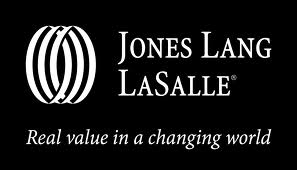 Luxury residential markets across Asia Pacific see limited price increases between July and September
Luxury residential markets across Asia Pacific see limited price increases between July and September
SINGAPORE, 05 December 2013: The third quarter of 2013 saw limited price growth in monitored luxury residential markets in Asia Pacific, according to the latest Jones Lang LaSalle Residential Index. While four of the nine featured markets saw minimal increases in capital values during the quarter, Hong Kong and Singapore reported quarterly declines, and the remainder recorded no change. On a yearly basis, growth remained strong for both Beijing and Jakarta, with both cities experiencing double digit growth; Hong Kong and Singapore registered price declines over the past 12 months and the rest of the markets saw growth that ranged from 2.4-6.0 percent.
After 10 quarters of strong growth, prices in Jakarta remained flat, leaving room for Beijing (1.6 percent) and Shanghai (1.5 percent) to lead the region in quarterly price increases, as a result of fewer projects coming to market. Healthy sales activity coupled with strong local demand saw Manila outperform its Southeast Asian peers, with quarterly growth of 0.8% in Q3.
However, Jakarta continues to outperform all monitored markets on an annual basis with 26.2 percent growth, followed by Beijing at 14.1 percent y-o-y. Of the nine monitored markets, Singapore saw the biggest quarterly (-0.4 percent) and annual (-2.5 percent) declines as tightening regulations on bank credit continued to affect investor sentiment. In Hong Kong, luxury residential prices also saw a marginal quarterly decline of 0.3 percent as sales volumes remain low due to buyer caution.
Commenting on the Hong Kong high end residential market, Joseph Tsang, Managing Director for Jones Lang LaSalle in Hong Kong said: “Buying demand for luxury residential properties remains weak, with monthly transaction volumes in Q3 falling to levels last seen during the Global Financial Crisis. Although prices have generally been holding up in the secondary market, we are starting to see signs of discounting in the primary market and expect prices to remain under pressure over the last quarter of the year and into 2014.”
With regard to Mumbai’s residential market performance, Anuj Puri, Chairman & Country Head, Jones Lang LaSalle India said: “In Mumbai, residential property prices have increased by 33% from the previous peak values of September 2008, and by 73% from previous trough values of September 2009. The luxury residential market was no exception to this ‘revival’. This is indeed high, and the window of opportunity for investing in residential properties in Mumbai remained for just about a year during the last trend reversal.”
“Currently, given the exceedingly high pricing and slow sales, we expect a marginal price correction in Mumbai’s residential property sector. However, the window of opportunity could be smaller than the previous one, since fence-sitting investors are jumping in quickly even with a modest price correction. Mumbai’s residential real estate market has always shown higher resistance for price moderation, largely because of the scarcity of land. Land cost often accounts for 3/4th of a project’s cost, and we are unable to unlock land in the peripheral regions that could effectively push housing demand away from the city. With insufficient and belated infrastructure, the city’s prime areas will continue to command premium valuations.”
Dr Jane Murray, Head of Research, Asia Pacific, Jones Lang LaSalle said: “Despite limited price increases across the region’s luxury residential market in Q3, we have still seen moderate to strong yearly growth in most markets. Looking forward to the remainder of the year and into 2014, we expect sales activity in Greater China and Singapore to stay at similar levels as investor sentiment continues to be affected by government tightening measures that are likely to remain in place for the next 12 months. Over the next year, emerging southeast Asian markets should continue to experience moderate price growth while we expect to see the strongest increases in Beijing and Shanghai as a result of resilient local demand.”
